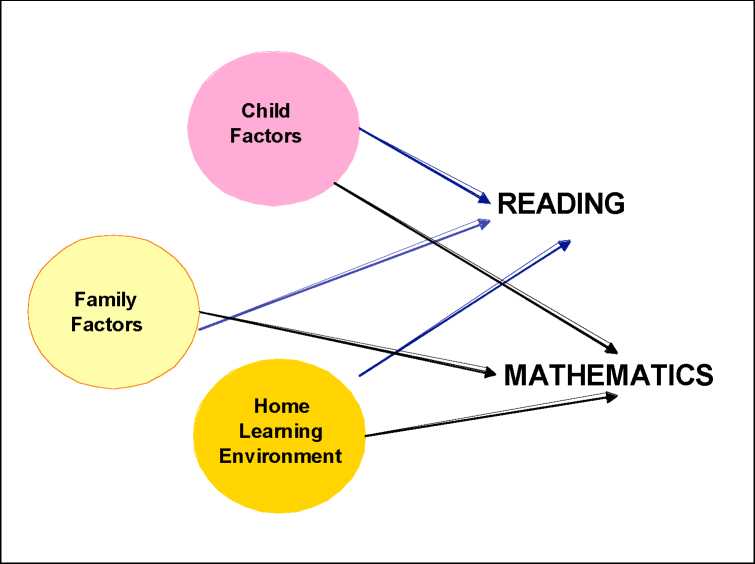Section 1: The Impact of different Child, Family and Early Years Home
Learning Environment (HLE) Characteristics on Reading and
Mathematics Attainment in Year 5
This section presents the results of analyses of the relationships between various child, family
and early years HLE characteristics and children’s cognitive attainments at the end of Year 5. All
the results presented in this section are net results, controlling for any other influences. As in all
social and educational research it is very difficult to draw firm conclusions about causal
connections. In this report we explore patterns of association and identify the predictive
influence of different measures in accounting for variations between pupils in their attainments in
Reading and Mathematics in Year 5.
The following measures have been used in the analyses:
• Child factors (i.e. gender, birth weight, number of siblings, early developmental problems,
early behavioural problems, mother tongue, ethnicity),
• Family factors (i.e. socio-economic status [SES], parent’s highest qualification, family
income),
• HLE in the early years (how often parents read to the child, teach the child the alphabet,
play with letters & numbers, teach songs & nursery rhymes, paint & draw etc.) before
starting primary school,
• Parental activities towards the end of Key Stage 1 (age 6) such as the frequency of
reading to the child, taking the child out on educational visits, computing activities, play,
etc. (see Appendix 4 for details of these measures).
Figure 1.1: Strategy of statistical analysis of background influences

Figure 1.1 illustrates the strategy of statistical analysis3. We investigated whether the
associations between cognitive attainments and these child, family and HLE factors remain
statistically significant when children reach the end of Year 5 of primary school education. The
analysis of the influence of child, family and HLE characteristics on cognitive outcome is an
important step as only on this basis is it possible to separately identify and quantify the net
3 Please note that all the analyses also accounted for associations between the predictors which could
have been illustrated by additional arrows. For simplicity these arrows are not shown in Figure 1.1.
More intriguing information
1. The voluntary welfare associations in Germany: An overview2. The technological mediation of mathematics and its learning
3. RETAIL SALES: DO THEY MEAN REDUCED EXPENDITURES? GERMAN GROCERY EVIDENCE
4. La mobilité de la main-d'œuvre en Europe : le rôle des caractéristiques individuelles et de l'hétérogénéité entre pays
5. The Making of Cultural Policy: A European Perspective
6. he Effect of Phosphorylation on the Electron Capture Dissociation of Peptide Ions
7. Transgression et Contestation Dans Ie conte diderotien. Pierre Hartmann Strasbourg
8. The Cost of Food Safety Technologies in the Meat and Poultry Industries.
9. Imitation in location choice
10. Monopolistic Pricing in the Banking Industry: a Dynamic Model